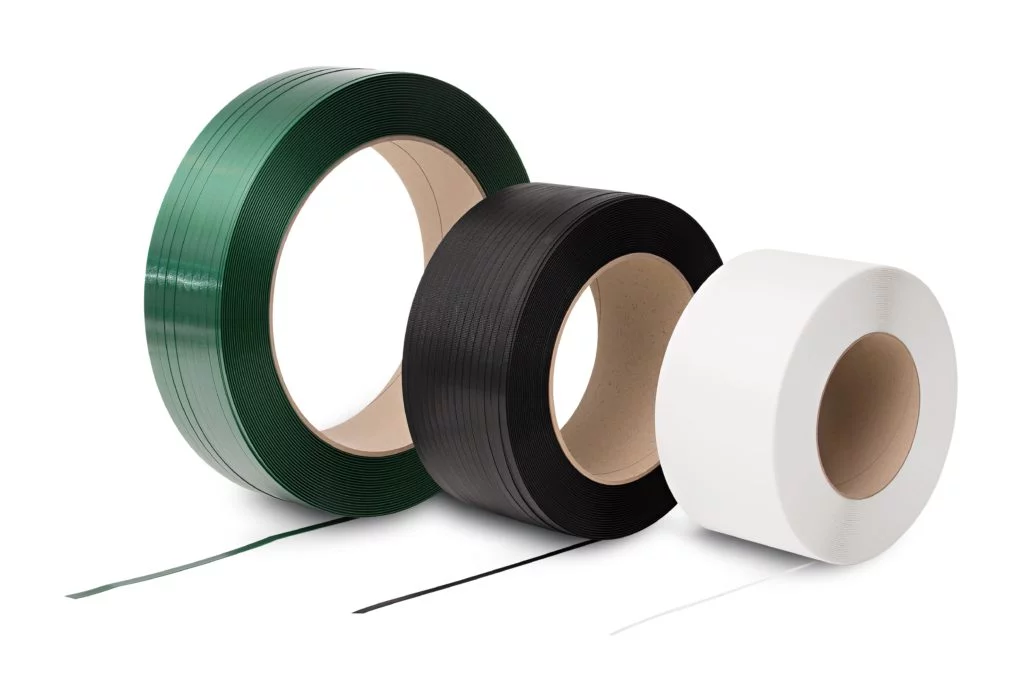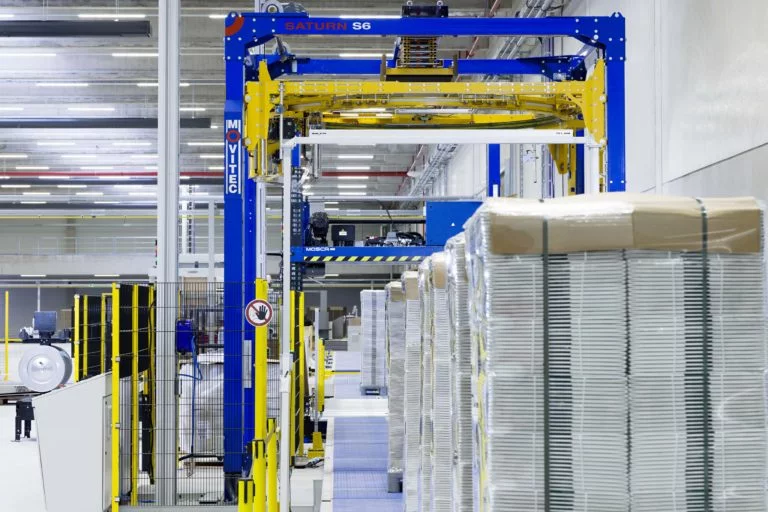Mosca GmbH, a manufacturer of straps, and twelve other European companies in the ‘Project Alliance Strapping’ (PAS) are warning of potential risks when reusing strapping. Reuse can lead to significant material weakness, particularly at welded joints, which directly affects transport safety on european roads. This has been confirmed by recent independent studies. In light of the new EU Packaging and Packaging Waste Regulation (PPWR), the alliance is calling for an exemption for strapping materials to promote sustainable recycling strategies without jeopardizing transport safety.
The EU Commission is currently discussing a potential exemption for strapping materials via a delegated act under the PPWR, which took effect in February. The PPWR aims to reduce packaging waste and promote circular economy through recycling. It also includes mandatory reuse quotas for strapping materials. In response, Mosca and the straps project alliance submitted a comprehensive, independent position paper to the EU Commission containing detailed study results. “We support the goals of the PPWR, but the safety of transported goods and the stability of supply chains must be ensured. This is not the case with multiple use,” explains Dr. Martin Bussman, Vice Chairman of the board of straps project alliance and Director Material Innovation at Mosca. “The position paper provides a reliable, factual basis that the EU Commission should definitely consider into the exemption.”
The PAS is an association of 13 leading European companies in strapping industry, including Mosca, Teufelberger, Fromm, Sekisui, Messersi and others.
Technical studies prove safety risks during reuse and multiple use
Independent technical tests, carried out by the Fraunhofer Institute for Microstructure of Materials and Systems IMWS at the Mosca Tech Center in Waldbrunn, provide the scientific basis for this requirement. The focus was on mechanical and thermo-mechanical testing according to international standards. This included the horizontal force test according to the EUMOS 40509 standard, the ISTA 1E inclination and vibration test, and tensile tests on various belt areas, particularly on the critical weld seams.
The results are alarming: After just one use, the welds on polypropylene (PP) and polyethylene terephthalate (PET) strapping are at 47 to 60 percent of their breaking strength on average. With repeated use, the tensile strength of PP straps decreases by up to 34 percent. Additional thermal stresses caused by temperature fluctuations between 40°C and -30°C further weaken them. This further compromises the integrity of the material during its practical application. It is particularly problematic that such stresses cannot be documented under real transport and storage conditions.
“These data make it clear that reuse poses considerable safety risks to goods and people”, explains Bussmann. The project alliance therefore favours a pragmatic regulatory solution. Rather than relying on potentially dangerous reuse, the use of high-quality post-consumer recyclates should be strengthened, and strapping material should be exempted from general reuse quotas of PPWR regulation. This is the only way to ensure permanently safe, resource-conserving transport packaging. “Additionally, the more frequently transport packaging is reused, the more often it needs to be inspected and maintained. This is not technically feasible or economically advantageous.”
Reusable solutions often less sustainable than expected
From an ecological standpoint, blanket reuse is not a viable solution either. A second study shows clearly the limitations of current reusable strap systems. The study analyzed standard market alternatives, such as mesh boxes with straps, tension straps with tarpaulin, and straps with tension clips. All alternatives were compared in the categories of safety, reusability, environmental impact and cost-effectiveness.
Technically, the alternative variants revealed significant weaknesses. Strapping material with clips, as the closest alternative to disposable straps, lost significant tensile strength and elasticity after just two cycles in reuse. These are key properties for load securing and transport safety. Tension straps with tarpaulin achieve 50 to 150 cycles depending on use, but they are highly susceptible to UV radiation and wear out quickly if you use them incorrectly. Mesh boxes with tension straps can withstand 200 to 300 cycles.

However, they are heavy and bulky in handling. Both aspects make them unsuitable for recurring applications. On top they would require extensive maintenance and documentation of each reuse cycle.
Additionally, the return transportation of reusable components must often be shipped over long distances within Europe, resulting in considerable logistical costs or local storage. This includes additional transportation distances and result in increased greenhouse gas emissions, such as CO₂ emissions. In addition to that higher storage and personnel costs occur and the need to provide replacements in the case of loss or defects. In heterogeneous supply chains with changing customers, setting up a functioning reusable system is nearly impossible to realize this concept. “The results clearly show that the effort involved is in no proportion to the gained benefits,” explains Bussmann.
Disposable strap is often more advantageous in terms of sustainability
A life cycle analysis also shows that disposable straps have a better carbon footprint than reusable alternatives in many cases, even though they are used only once. Its low material usage, light weight, and high recyclability make straps an environmentally friendly packaging material, especially when made from post-consumer recyclate.
“It’s crucial to consider these facts when we talk about ecological responsibility,” Bussmann continued. “Token politics won’t help. We need solutions that are practicable, safe, and demonstrably sustainable.”
The PAS’s will be continue it’s work towards a sustainable circular economy. Next step to take will be the increased use of post-consumer recyclates in straps. The alliance is working to close material cycles and significantly reduce resource consumption, such as energy and plastics. “The PAS stands for practical solutions that combine safety and sustainability,” says Bussmann. “We will continue to contribute with our expertise in the future – in dialogue with politics, industry and society. Only an evidence-based approach will enable us to design the truly sustainable packaging solutions of the future.”













